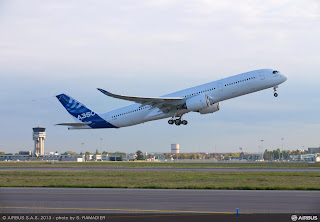One question that is frequently asked in aviation circles about piloting issue is as to why a go-around was not carried out when the approach was unstable.
What is it that makes a well trained and proficient crew shy
away from conducting a go-around on the approach when it is required so??
Normal go-arounds without any failure are the least
practiced maneuvers by the crew and they tend into get into the area of
Conscious-Incompetent, wherein they have the knowledge of conducting the
maneuver, but have become rusty in skill due to not been able to have the
opportunity to practice one in the simulator or the aircraft.
Hence, when the situation develops to consider a go-around,
decision making may tilt towards trying to recover the flight path and salvage
the unstable approach rather than a clear decisive go-around being executed.Pilots generally being mission oriented, go-arounds are
looked at as a failure on one’s part to be able to continue approach and land.
Go-around is sometimes perceived by pilots as their inability to get things
done and complete the mission.
Also another aspect that contributes to making pilots push
the threshold and carry on the approach despite moving towards instability is
the fact that in the past similar scenario was managed and recovered and
approach was continued in stable conditions. It is this expectation based on
previous experience that make’s one believe that they can pull it off again.So what can be done to ensure effective decision-making and
execution of go-around occurs when warranted by conditions??
Conducting a good briefing on the go-around is essential as
it brings the crew into loop as to what can be expected from each other and
better equip and appraise them on the procedure flow. Briefing needs to include
not only the part about the flight path during a go-around, but also have the
tasks pertaining to go-around maneuver for each crew discussed threadbare.
A well executed go-around maneuver is something like a
synchronized swimming amongst a team.
Crew need to adequately trained and equipped to not to
succumb to land it at any cost syndrome.
As there is an adage which says “CHANGE THE MISSION”, which
sums up very well to make crew move away from unsafe to safe zone when the
approach is unstable.
Good training practices, procedures and curriculum, along
with good CRM skills and task sharing,
will equip and help crew to conduct an effective go-around.
Do you have any opinion on how best this go-around issue can
be tackled?? Kindly send in your comments to enhance the discussion



A fighteraircraft is a forces aircraft designed primarily designed for air-to-air combat opposed to other aircraft,[1] having the status of conflicting to bombers and attack aircraft, whose key mission is to attack ground targets. The hallmarks of a fighter are its hurry, maneuverability, and insignificant size next of kin to other combat aircraft.
ReplyDelete